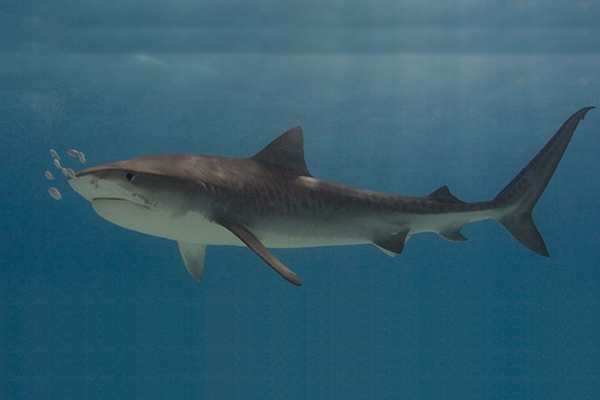Threats To Sharks Threaten Entire Ecosystems

Inside Science Minds presents an ongoing series of guest columnists and personal perspectives presented by scientists, engineers, mathematicians, and others in the science community showcasing some of the most interesting ideas in science today.
(ISM) -- Throughout most of the world sharks are in trouble. Big trouble. In some areas, with adequate management, shark populations have stabilized, but likely at levels far below what they were decades ago. In the rest of the world, shark fishing continues to be a major threat to many species. Recent estimates suggest that around 100 million sharks are taken by fisheries every year.
Because of their slow growth – sharks may take a decade or more to reach maturity – and low rate of reproduction – many species have fewer than a dozen young a year – this rate of catches is unsustainable. The decline of sharks will continue.
Why should we care? What will that mean for the oceans and even for fisheries targeting species other than sharks? We know from studies on land that when large predators are removed, entire ecosystems can be destabilized. That can be bad for animals and people. If similar things happen in the oceans, we not only need to think about halting declines of sharks, we will probably need to find ways to rebuild their numbers.
The attention that the Discovery Channel's Shark Week brings to these animals is great, but that attention needs to extend beyond the first week of August for these predators and the places they live to recover and eventually thrive.
For the past fifteen years, my colleagues and I have been trying to figure out how important tiger sharks are in the aptly named Shark Bay, Western Australia. Why travel halfway around the world? Quite simply, to study sharks in a place where their ecosystem is relatively untouched. Also, because Shark Bay features some of the world’s largest seagrass beds. Seagrass is important because it provides a habitat that supports populations of fish and shellfish that people rely on. It also helps to combat climate change by pulling carbon dioxide out of the atmosphere. By working in Shark Bay we can understand the role of sharks and what might happen to Shark Bay and its seagrass if tiger sharks were to disappear. It also lets us predict what might happen in other places where sharks have been overfished.
In Shark Bay, we have worked not only on sharks, but on their prey — including dolphins, sea turtles and sea cows — as well as the wider ecosystem. Our findings demonstrate that tiger sharks are critical to the Shark Bay ecosystem. But not in the way you might think. It turns out that the fear of sharks – by the sea cows and sea turtles that eat the seagrass – helps protect the seagrass from being over-grazed.
Get the world’s most fascinating discoveries delivered straight to your inbox.
Here is how it works: Tiger sharks like to hunt in shallow waters in the bay; a perfect place for seagrass to grow. To avoid becoming a shark snack, turtles and sea cows generally avoid these areas. The seagrass can grow into a lush habitat that provides shelter for small fish and shellfish that will grow up into species people want to catch. In areas that sharks don’t frequent, seagrass is heavily grazed and does not support big populations of fish and shellfish. That means that if we were to lose tiger sharks from the bay, the seagrass likely would be grazed down all over.
The loss of seagrass would be bad news for fish and fishermen – and maybe even for turtles and sea cows! It also could result in the loss of a large amount of carbon dioxide back into the atmosphere that would no longer be stored by seagrasses. There is evidence that the loss of sharks is hurting seagrass in some places.
In Bermuda and the Indian Ocean, where shark populations have declined, increasing populations of sea turtles are causing entire seagrass beds to virtually disappear. And it isn’t just in seagrass ecosystems where sharks are important. Recent studies point to the possibility that healthy coral reefs need sharks, too.
Luckily, many countries have begun to recognize that sharks can draw tourists. The associated economic benefits of shark tourism can outpace the income from fishing for sharks. There also has been a growing realization that if we don’t slow down shark fisheries, they will disappear. This has led some countries to adopt fishing quotas aimed at keeping sharks at sustainable population levels.
Other countries have gone further. Shark sanctuaries – where they are protected from being fished - have been declared throughout the waters of a number of countries around the world. This kind of precautionary approach is vital to protecting and restoring shark populations while scientists work to learn more about their potentially critical role in coral reef and other marine ecosystems.
Inside Science News Service is supported by the American Institute of Physics. Mike Heithaus is a professor of Biological Sciences at Florida International University in Miami. His research has focused on predator-prey interactions and understanding the ecological importance of large marine animals, including sharks. He also has been active in bringing the excitement of scientific research to K-12 students and the public.


